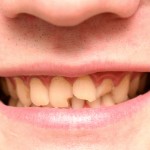
Cerebral palsy is group of disorders that affecting person’s ability to move and maintain balance and posture and is the most common physical disability in childhood with 2.1 cases per 1000 live births. Cerebral palsy is classified into 4 types based on the main types of movement disorder involved, spastic (85%–91% of cases), dyskinetic (4%– 7%), ataxic (4%–6%), and hypotonic (2%). Because of their condition patients with cerebral palsy are at greater risk of trauma.
The aim of this review was to assess the prevalence of orofacial injuries in patients with cerebral palsy (CP).
Methods
A protocol was registered with the PROSPERO database. Searches were conducted in the Embase, Latin American and Caribbean Literature on Health Sciences (LILACS), PubMed/Medline, Scopus, Web of Science, Google Scholar, Open Gray, and ProQuest Dissertation and Thesis databases. Cross-sectional studies investigating the prevalence or orofacial injuries were considered. Two reviewers independently selected studies, extracted data and assessed risk of bias using the Joanna Briggs Institute’s Critical Appraisal Tool for cross-sectional studies, disagreements were resolved with a third reviewer. A random effects meta-analysis was conducted.
Results
- 12 studies published between 2005 – 2017 were included.
- 9 studies were considered to be at low risk of bias and 3 at moderate risk.
- All 12 studies reported a higher prevalence of dental trauma in those with CP.
- Meta-analysis (10 studies, 1323 patients) found a prevalence of orofacial trauma in patients with CP = 34% (95%CI; 18 – 25%).
- Prevalence of different types of orofacial injury is shown in the table below: –
| Type of injury | No of studies (patients) | Prevalence (95%CI) |
| Enamel and dentine fracture | 4 (949) | 23% (4 – 52%) |
| Dental avulsion | 3 (668) | 1% (0 – 4%) |
| Lateral luxation | 2 (600) | 1% (0 – 3%) |
| Intrusive luxation | 2 (600) | 1% (0 – 2%) |
- The certainty of evidence was assessed as very low.
Conclusions
The authors concluded: –
Approximately one in three patients with cerebral palsy showed at least one type of orofacial injury involving dental trauma. There is a lack of literature assessing the prevalence of these traumas in soft tissues and the evidence for this outcome remains uncertain.
Comments
The authors registered their protocol with the PROSPERO database and searched a good range of relevant databases. Twelve studies were included with sample sizes ranging from 16 for 500. Ten of the studies were included in the meta-analysis and while the authors rated none of them to be at high risk of bias 8 out of 10 were rated at high risk of bias for one or more of the domains assessed. An overall prevalence for orofacial injury on patients with CP of 34% (95%CI; 18 – 25%) was found which is higher than the reported general prevalence in permanent teeth of 22%. However the cross-sectional nature of the included studies and potential biases in the included studies mean that the available evidence is of very low certainty so should be interpreted cautiously.
Links
Primary Paper
Heiden GS, Andrade RVS, de Mattos de Araujo BM, da Silva-Neto UX, Baratto-Filho F, Zeigelboim BS, de Castro Corrêa C, Taveira KVM, de Araujo CM. Prevalence of orofacial injuries resulting from trauma in individuals with cerebral palsy: A systematic review and meta-analysis. Dent Traumatol. 2023 Aug 21. doi: 10.1111/edt.12879. Epub ahead of print. PMID: 37605544.
Other references
Dental Elf – 7th May 2021
Dental Elf – 9th Oct 2020
Dental Elf – 15th May 2018
